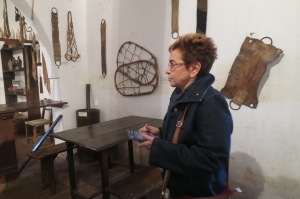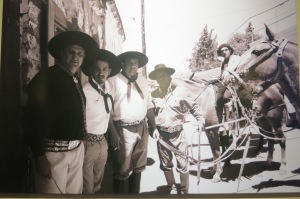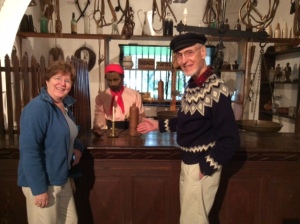I only remember Celia losing her temper once during the 10 months she lived with us. We were talking about world history of all things, and I mentioned that Magellan had “discovered” the Falklands on his way around South Africa. She replied that no, Ma-he-yan-es had discovered the Malvinas.
We quickly agreed that Magellan was merely an Anglicization of Ma-he-yan-es. No problem there. But I said the islands were the Falklands, and proved it by showing her the name on a National Geographic map. Celia was practically in tears when she said that the map was wrong, the name of the islands were the Malvinas.
A decade later, the world was introduced to the Argentine passion for the Malvinas.
To recap the history: The islands are a remaining vestige of Britain’s empire. They are on no particular use to anyone … or at least, they weren’t in the ’70s. The 2500 or so people who live on the islands come from England and think of themselves as British, so if a plebiscite were held today, it’s clear which way they would vote. Meanwhile, the islands lie off Argentina, and their economic life is via Argentina, and Argentina considers them to truly belong to Argentina. As it happens, the story of the Malvinas is something that every Argentine school child learns, and learns it as a lesson of how a colonial power took unfair advantage of an emerging nation and stole the islands away, and how, once Britain realizes her obligations to the world of nations, the islands will revert to Argentine rule.
So all my National Geographic map proved to Celia is that the maps are drawn by the victors. No wonder she was so upset.
A decade later, the Argentina’s military dictatorship wanted a distraction from the economic mess they had created, and apparently they thought that Britain had problems of its own and would not stop Argentina from seizing the islands. Wrong again.
Maybe if Maggie Thatcher had not been prime minister, the story would have ended differently. But the Iron Lady needed a distraction of her own. She had just broken the coal miner’s union, but feelings were running high. To quote someone, a small war far, far away can have its benefits. It took about three days after Argentina invaded the islands for London to respond: The British revved up the engines of the Hermes aircraft carrier, assembled a naval fleet, and steamed off to the South Atlantic.
Argentina had no aircraft carrier, and the land bases were too far for the Argentine pilots to do more than make a quick run before they needed to return to shore. They were brave, but they weren’t many, and they didn’t have a chance.
They also didn’t get lucky — one of the pilots saw a blip on the radar that he thought was the Hermes, but it turned out to be a cargo ship. Had the Argentines hit the Hermes, the outcome might have been extremely different.
As it was, 700 young men died on the Argentine side, 200 on the British side, plus three islanders were killed by British fire. After about 10 weeks Argentina capitulated. Within a year the military government was gone, undone by its own overreach. In the years since, neither Argentina nor Britain has changed their position on the islands, so the young people who died in the war absolutely died for no reason.
And today, the maps of the world — except those printed in Argentina — give the name of the islands as the Falklands. As for me, I can never think of them without thinking of Celia’s frustration and tears. To me, they are better off left unnamed.
And, oh, yes: Today we know there are oil reserves in the waters off the islands.



 Posted by martyhelman
Posted by martyhelman 

